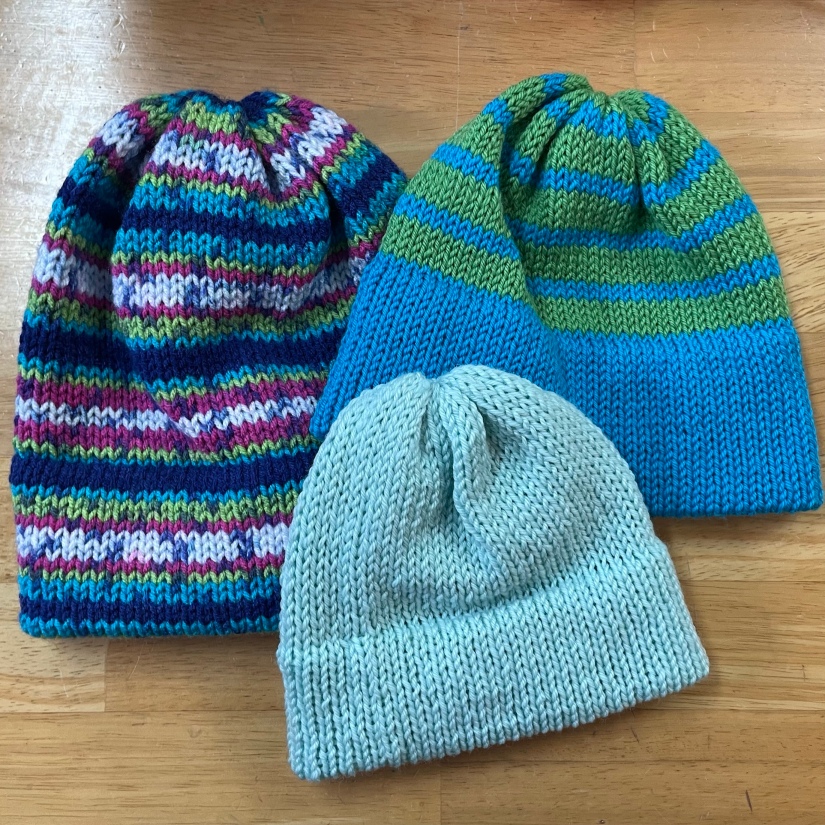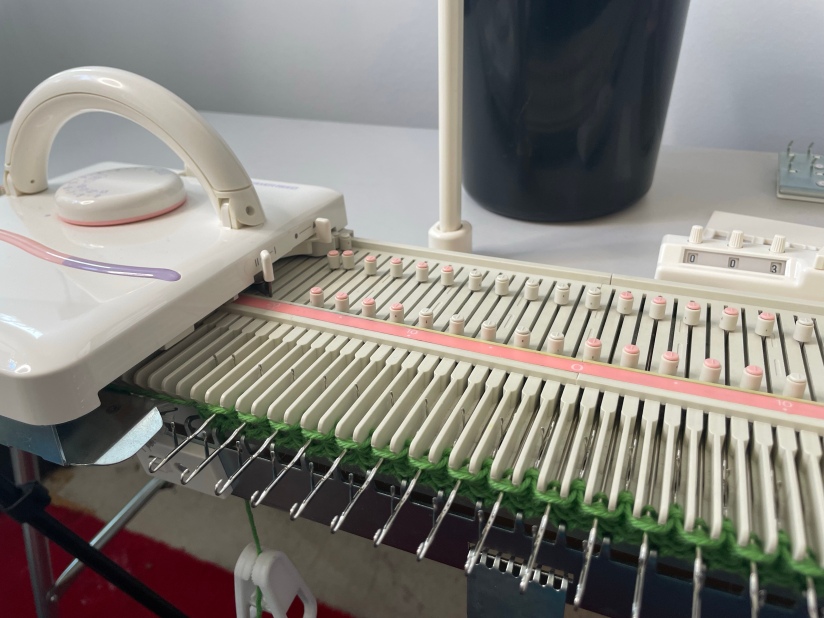Here in the USA, recent Machine Knitting books seem few and far between. That’s not the case across the pond, and I’ve been able to find quite a few wonderful skill and pattern books published within the past five years from the UK.
Here’s my review of Creative Machine Knitting: A Voyage of Discovery into Colour, Shape and Stitches by Alison Dupernex.

Creative Machine Knitting is simply a treasure trove for machine knitters overflowing with inspiration and design know-how. Expand your creative vocabulary, knit with an open mind and be prepared to have a go, make changes and look to improvise—push yourself out of your comfort zone.
[T]he book features over 100 patterns, all of which can be adapted and form the basis of new designs.
Jacket Blurb
The Details
| Published: 2022 | Publisher: The Crowood Press |
| Format: Hardback | Pages: 256 |
| MSRP: £35.00 | ~$44.00 as of this post |
Chapters
| An Introduction to Design Sources | Waistcoats |
| Sustainable Options for Knitwear Designers | Children’s Knitwear |
| Design Basics | Accessories |
| Classic Jackets and Cardigans | Interiors |
| Painting with Yarn | Cable Directory |
| Designing with Panels and Borders | Stitch Pattern Directory |
| Shawl Collar Cardigans | |
| Diagonal Knitting |
What I’m Looking For
If it’s a machine knitting book in print today, you can bet I’m going to get my hands on it. If it’s a good book, I’m recommending it to my friends. If it’s a great book, I’m recommending it to my students, too.
But what am I looking for? What makes a book good or great?
Schematics
Pictures, illustrations, and diagrams are vital to any skill book. Knitting books, hand or machine, must have pattern schematics to be “good.” Schematics are the first thing I look for in a book.
I like to play around with yarns and rarely, if ever, use the recommended yarn for a pattern. Schematics make it easy to change yarns and still have the correct finished garment.
Perspective
I look for eye-catching designs and unique pattern elements, twists on familiar classics, and sections sharing the writer’s design thoughts and philosophy along with thoughtful commentary on the crafting community.
How To’s
If a book is geared towards building new skills, I look for step-by-step tutorials with plenty of photos, but I don’t think every book needs to spend chapters dedicated to starting from scratch. I appreciate books for those of us who have made it past the beginner stage and don’t need our hands held.
Overview
Creative Machine Knitting is aimed at the experienced machine knitter who wants to explore knitwear design. Dupernex begins with a section on culture, books and patterns, and key considerations on originality. She emphasizes adapting elements you like and using your own skills to create designs rather than copying someone else’s work. She encourages you to experiment with your style, research the market, and make production choices based on feasibility, but what I appreciated most was the chapter called Sustainable Options for Knitwear Designers. That section includes fiber analysis, types of sustainability, and commentary on the Slow Fashion movement.
Dupernex includes a brief history of classic cardigans before diving in to her patterns. Building onto those classics, she includes punchcards and color instructions for customization and explains her design process and inspiration. There is a wealth of punchcard information in this book that mainly focuses on using fair isle techniques.
Thoughts
Schematics? Check!
Each pattern features schematics, but most patterns are one size.
I don’t know Ms. Dupernex’s measurements, but I’m 5’8″ with a 48″ bust, and some of the measurements don’t hit me in the same places they did her. Since many of these patterns are knit sideways, adding length could pose a problem. Tall and plus size ladies like myself will need to do the math to knit these patterns and be willing to rework a few things if needed.
Perspective? Lovely, but overwhelming…
I appreciate that Dupernex took the time and space in this book to focus on what the industry can be moving forward and choices designers can make to help it become sustainable and more focused on small, local businesses and creators. As knitters, we aren’t pumping out cheap tees with fun slogans that wither in the wash after a few wears. We should strive to create quality when we knit, and I think responsible material choices are included in that.
As for her designs themselves, I have very mixed feelings on Dupernex’s work. I love her use of classic shapes, but I prefer texture over colorwork any day. Dupernex relies on colorwork for the majority of patterns in this book, and I cannot see myself making the same color choices she has.
Stripes, stripes, and more stripes in every color under the sun often lead to the eye being drawn to random places on the body–places the wearer might or might not wish to emphasize. The busyness of the colors is often overwhelming to me, and I find myself drawn to her color blocked, earth toned patterns over the majority that use color-changing fair isle stripes.
Because of the focus on color, the cable directory feels a little out of place, but I love that Dupernex made sure to include texture in her book. We definitely do not agree on color usage, but I think seeing this (what feels to me) extreme color usage will help me grow as a knitter and designer.
How To’s
Dupernex gives precise color instructions down to the row on how to recreate her color madness, but since she included sections on blending yarn and choosing inspiration, you don’t have to feel tied to the pattern or her color choices.
Overall…
Should you buy Creative Machine Knitting? For me, it’s a resounding “YES” despite my color and stripe issues. The chapters on sustainability and design considerations from someone who has long been in the machine knitting industry are worth it. The tips on finding inspiration plus the fair isle colorwork experience, as wild as I found it, will help you solidify your own design perspectives. It may be too much for brand new beginners, but the step-by-step color instructions could help the more confident beginner knit their own technicolor dreamcoat.
Where to Buy
I bought my copy during a sale from Blackwell’s UK along with other machine knitting books that haven’t had their US release yet.
I’m a bit of a hypocrite here because I didn’t wait for US release to shop local, but I hope you’ll consider asking your local yarn shop or bookstore to order the book for you.
If you don’t have a local shop that can order the book, please consider using my Amazon Affiliate link to order. It doesn’t cost you any extra, and I may receive a small commission that will help me continue bringing you free content.

Thank you for joining me on my machine knitting journey. Do you have Creative Machine Knitting by Alison Dupernex? What do you think? If you don’t, do you plan on buying it? Let me know in the comments below.
















































